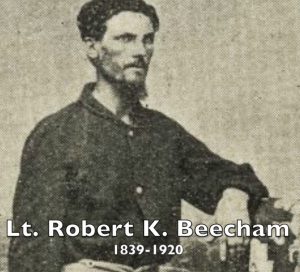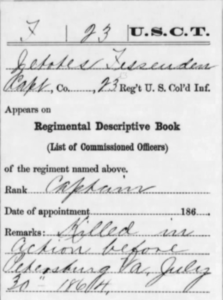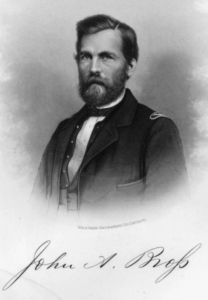10989 words
STORY 24 – THE CRATER CLIMAX https://www.youtube.com/watch?v=4LJpJeIwFMw#t=1h47m41s Click Here and the link will take you to the beginning of this story at 1:47:41 within the longer video called “Jasper Thompson’s Destiny Day September 6, 1906”
FLICKR 64 images
https://www.flickr.com/photos/jimsurkamp/albums/72157681927460936
With support from American Public University System (apus.edu). The sentiments expressed do not in any way reflect modern-day policies of APUS, and are intended to encourage fact-based exchange for a better understanding of our nation’s foundational values.

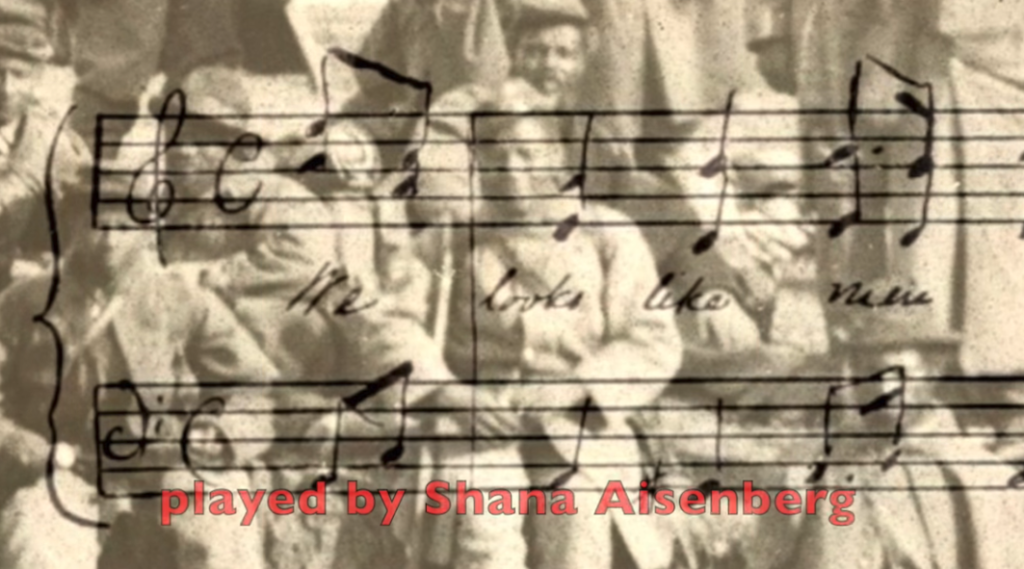
Robert K. Beecham, a white, Wisconsin-born officer for the 23rd wrote they had recruited some “pretty hard cases” in Baltimore and Washington, but:
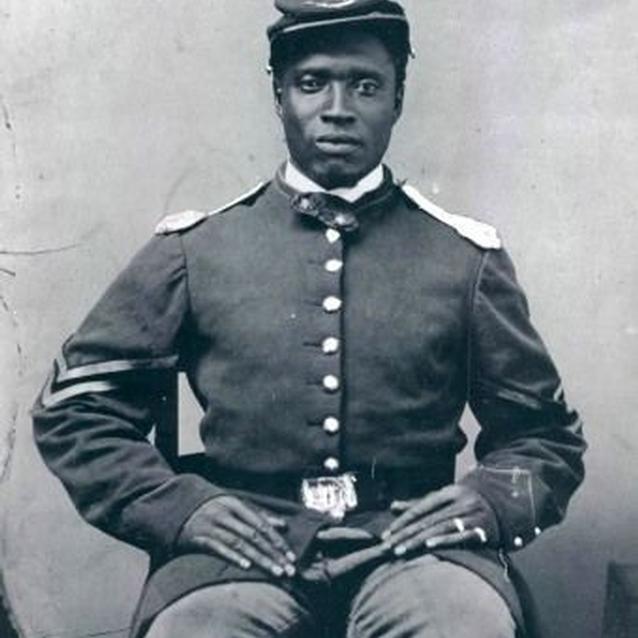
“As a rule the men were sober, honest, patriotic and willing to learn and fulfill the duties of soldiers. . . The 2nd Wisconsin was not as sober and temperate as the 23rd U.S. Colored Troops, (in fact) there was never an organization of 1,000 men in all this broad, free America where a woman was held in greater esteem or her honor more sacred.” Beecham added the men “were not filthy, rather the opposite and for that reason if for no other, I would prefer to command a company or regiment of black, rather than white soldiers.”

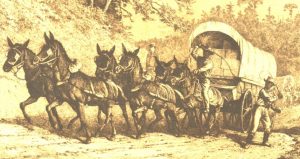
The 23rd resumed escorting the infinite train of wagons to the front and returning with wounded to the ships at Belle Plain,
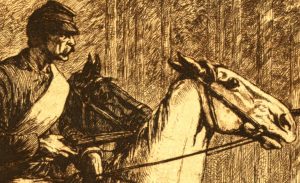
facing ambushes en route.
James Rickard wrote ( “Services with Colored Troops in Burnside’s Corps” by James H. Rickard. pp. 18-22 – books.google.com ):
“There were not ambulances enough for the emergency,

“and the baggage wagons had to be used.
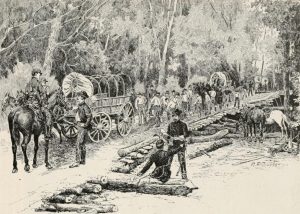
“The roads were very rough; it was a most pitiful situation, the shrieks and groans of the men, as the

“wheels would strike stumps or sink suddenly into holes in the deep ruts which had been formed. It was necessary to have a strong guard all the way with the teams, to prevent surprise and capture of the trains.
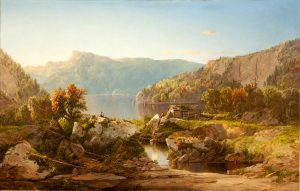
“I shall never forget a sight I beheld that morning.
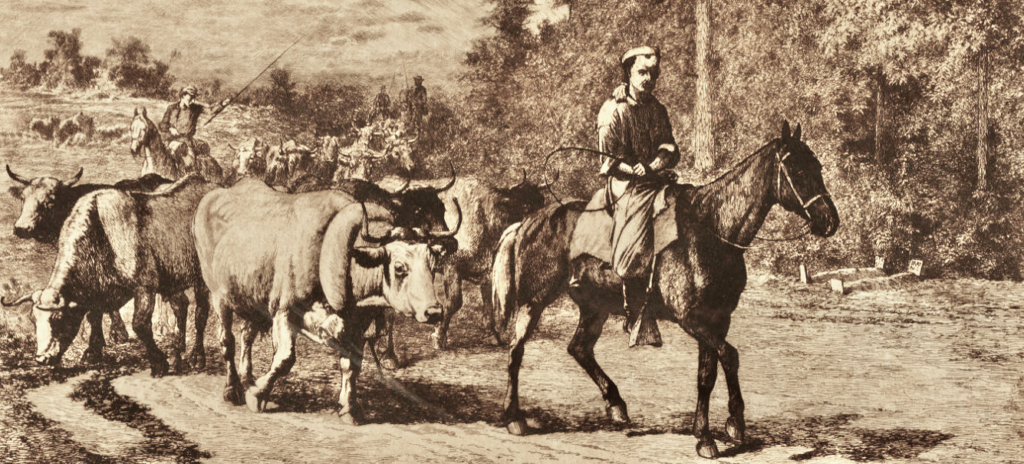
“The cattle for the Ninth Corps were herded in a valley a mile or two in diameter, and they completely filled it, and at sunrise it was a magnificent sight as I beheld them from an eminence near by. . . .

“Before crossing the James they were all eaten. This gives something of an idea what it took to supply provisions for such an army.
“The first sight for central Virginians of black men in blue coats with muskets and bayonets drew violence,

“consternation, fear or sublime joy for those enslaved. Their Redeemer had arrived.

Wrote Sergeant John C. Brock:

“The slaves come flocking to us from every part of the country. You see them coming in every direction, some in carts, some on their master’s horses, and great numbers on foot, carrying their bundles on their heads. They manifest their love for liberty by every possible emotion. As several of them remarked to me, it seemed to them like heaven, so greatly did they realize the difference between slavery and freedom. – “Making and Remaking Pennsylvania’s Civil War” edited by William Blair, William Pencak p. 152 quoting Brock – books.google.com
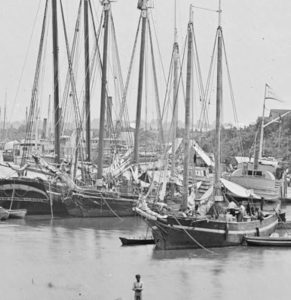
“They were all sent to White House Landing in wagons. From hence they are to be taken to Washington in transports.
“We have been instrumental in liberating some five hundred (152) of our brothers and sisters and brethren from the accursed yoke of human bondage” – Brock pp. 151-152 – books.google.com
HANGED FOR RAPE



June, 1864 – Pvt. William Johnson of the 23rd regiment confessed his guilt to the charges of desertion and rape and was executed and in plain view of the enemy, a white flag covering the ceremony. The site is near where the current visitor center sits.
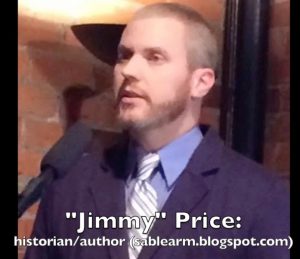
Wrote blogger historian James “Jimmy” Price:

The War of the Rebellion Atlas – digitalcollections.baylor.edu

June 15-18, 1864 – 23rd participates in the opening battles outside of Petersburg. Rebels under P.G.T. Beauregard hold on to the city, however, and a siege begins. The 23rd is engaged in building fortifications until late June.


In July, Gen. Burnside’s proposed mine attack against the Confederate lines along the Jerusalem Plank Road was underway.
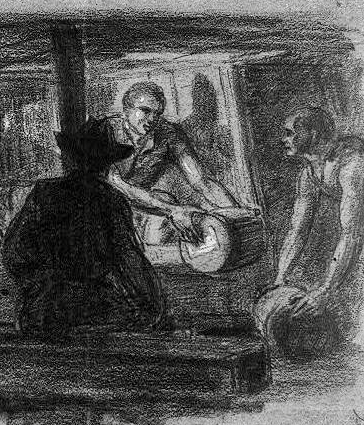
“Towards the end of the digging, members of the 23rd United States Colored Troops were employed to carry dirt from the mine in sacks.
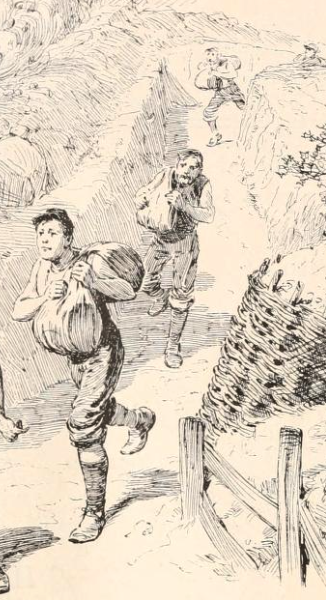
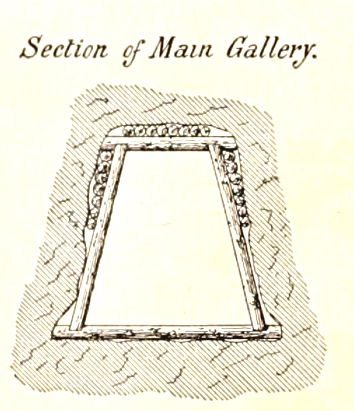
“They also hauled timber to the gallery [of the mine] for framing its sides.”
SOURCE: William H. Powell (major, U.S.A.) wrote in his article in the 4th volume of Battles & Leaders, entitled: “The Battle of the Petersburg Crater” pp. 545-560. archive.org
On the Eve of the Battle of the Crater – July 29th, 1864:
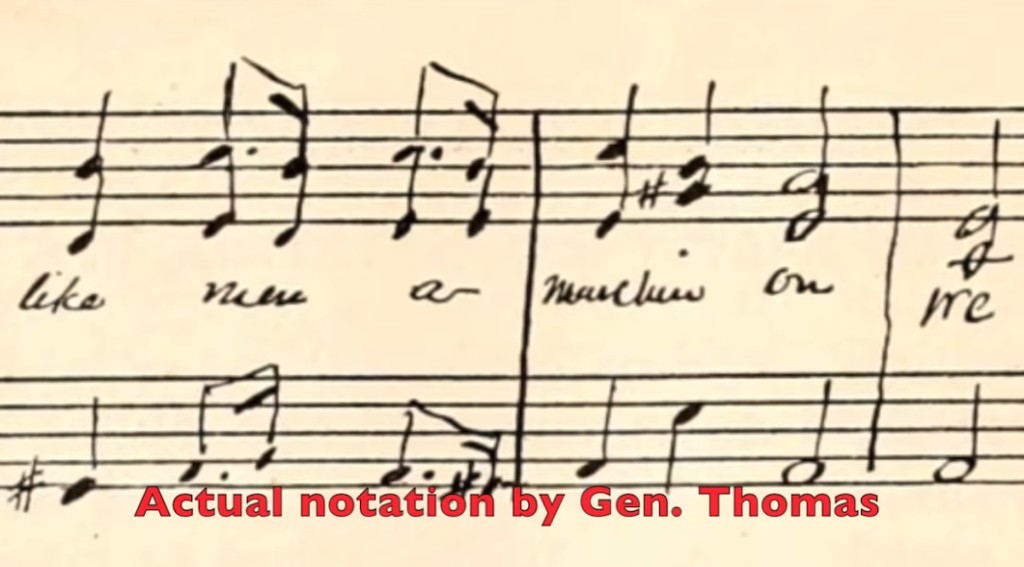
Music notation of the song the African-American troops sang to prepare for battle, as written down by Henry Gordon Thomas.
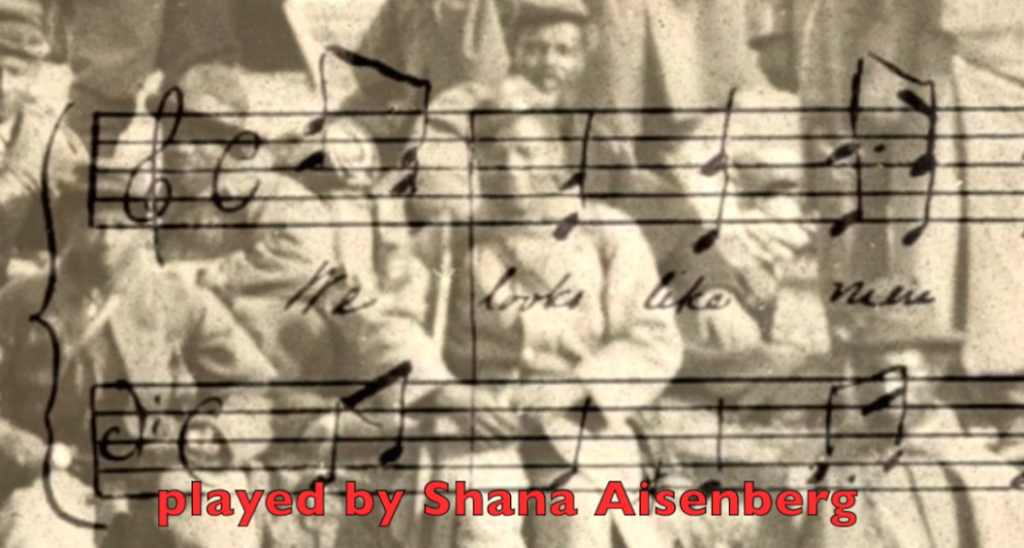
“The black men in blue were in high spirits on the eve of the battle outside Petersburg. But when Gen. Thomas told them higher-ups took away their planned position as the leading attack division – the African-American division – of the four – they stopped singing that song.
“Until we fought the battle of the crater they sang this song (563) every night to the exclusion of all other songs. After that defeat they sang it no more.”
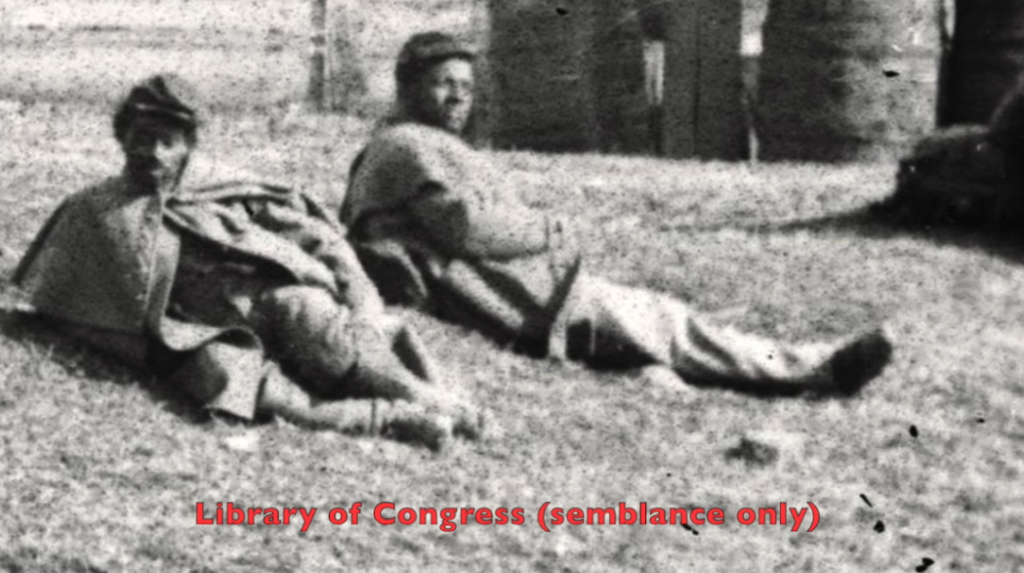

“About 3 am, the morning of the battle we were up after a short sleep under arms. Then came the soldiers’ hasty breakfast. This morning our breakfast was much like that on other mornings when we could not make fires: two pieces of hard-tack with a slice of raw, fat salt pork between, not a dainty meal, but solid provender to fight on. And black coffee.”
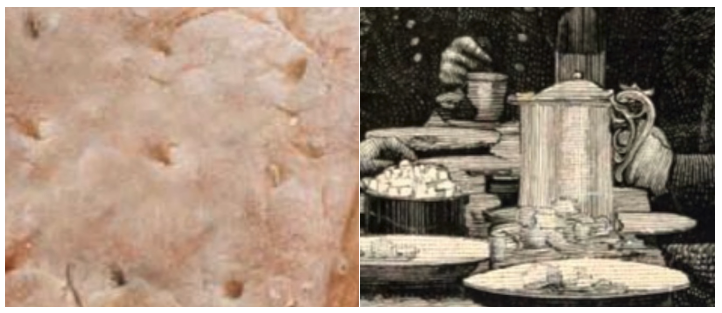

“When all preparations were made, we lay down for a little sleep, and were awakened shortly after daylight by the explosion and the terrible discharge of cannon, that made the ground tremble as by an earthquake.”

Tate Britain – London (United Kingdom – London) – web.archive.org
Thomas:

“At 4:45 came a dull, heavy thud, not at all startling;
“It was a heavy, smothered sound, (but) here was a mine blown up, making a crater from 150 to 200 feet long, 60 feet wide, and 30 feet deep,”
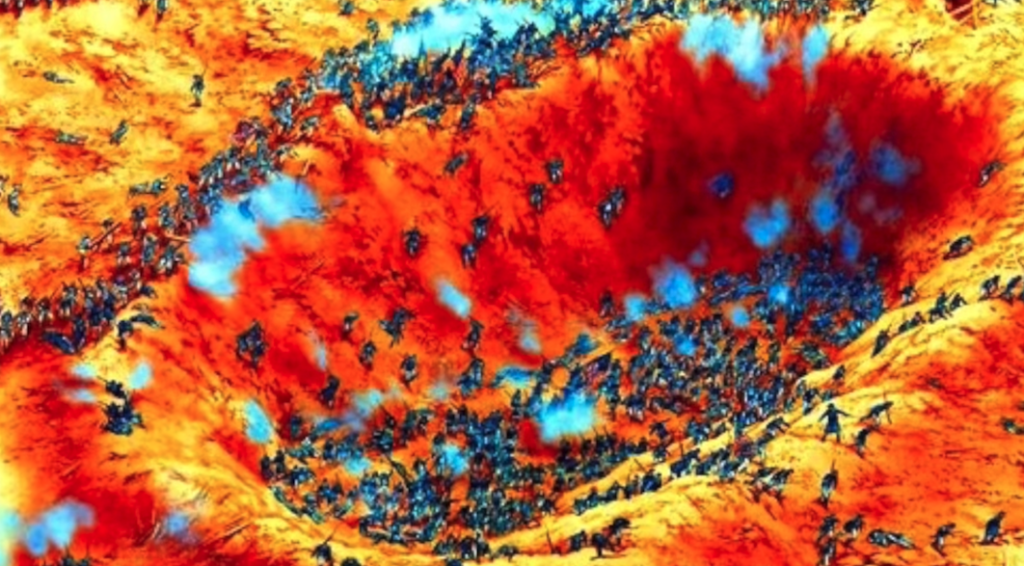
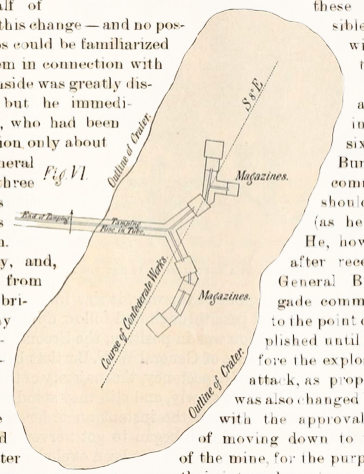
Rickard:

“The First Division only went as far as the crater and stopped, and it was nearly an hour before the colored troops were ordered in, having been standing crowded in the covered ways leading up to the breastworks.”

“The First Division of white soldiers advanced with little opposition but jammed in the narrow, six foot passageway beside the crater, unable to advance. The 2nd Division, now under fire became stuck similarly and were being fired upon from along the breastworks and artillery in front,

driving them for the safety inside the crater. The same occurred with the 3rd Division of white soldiers. Their orders did not anticipate the jam in the passageways and close range gunfire
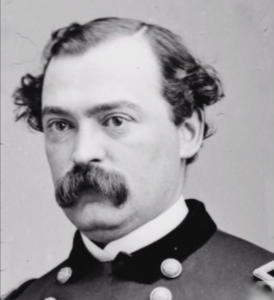
and their commander Gen. Ledlie who commanded the lead division was not there.”
The 23rd USCT Charges the Crater
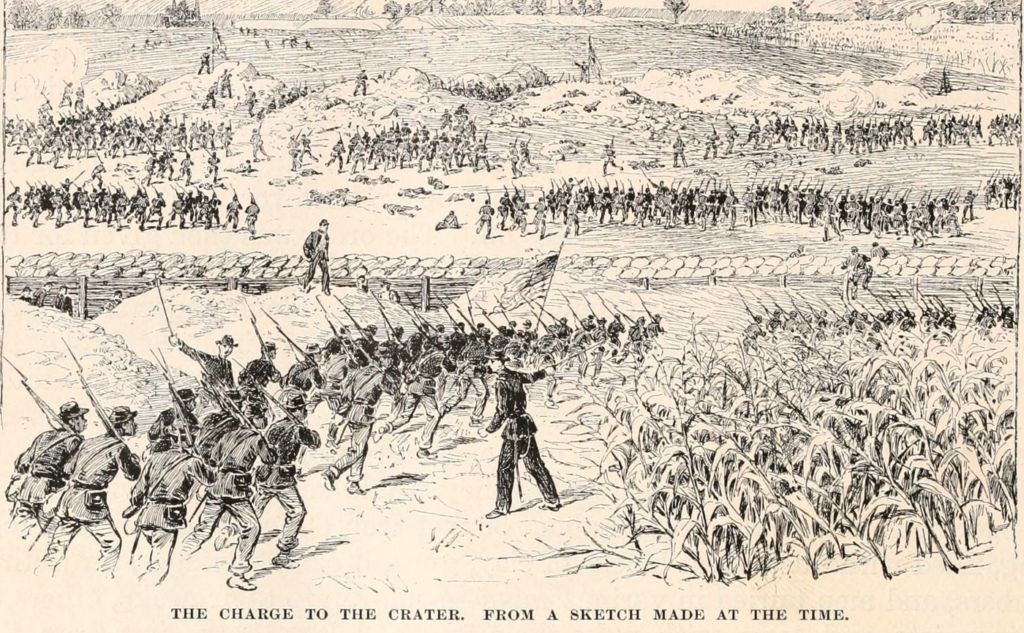
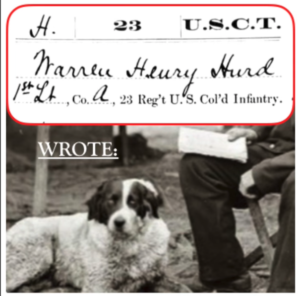
“It seemed [to take] forever [to move forward]. The whole [division]…filed through a single parallel… we were hindered by officers and orderlies coming to the rear, the parallel being only six feet wide.” – Diary of Warren H. Hurd, 30 July 1864, Private Collection

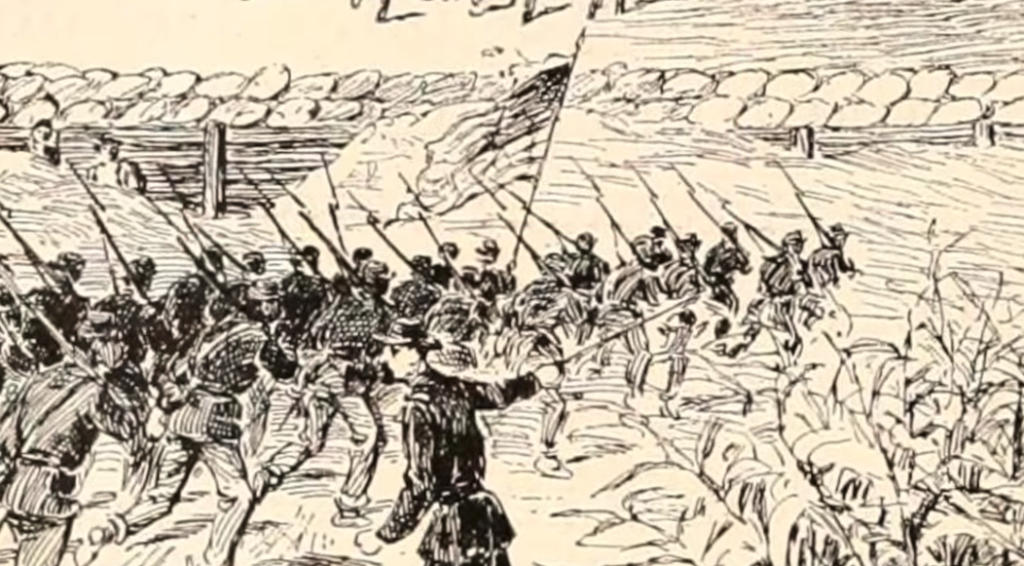
“My brigade moved gallantly on right over the bomb-proofs and over the men of the First Division & as we mounted the pits, a deadly enfilade from eight guns on our right and a murderous cross-fire of musketry met us.

“Among the officers, the first to fall was the gallant Fessenden of the 23d Regiment.
“. . . Liscomb of the 23d then fell to rise no more; and then Hackhiser of the 28th and Flint and Aiken of the 29th. Major Rockwood of the 19th then mounted the crest and fell back dead, with a cheer on his lips.”

“Nor were these all; for at that time hundreds of heroes “carved in ebony” fell. These black men commanded the admiration and respect of everyone who beheld. (564)” – Thomas, Battles & Leaders Vol. 4
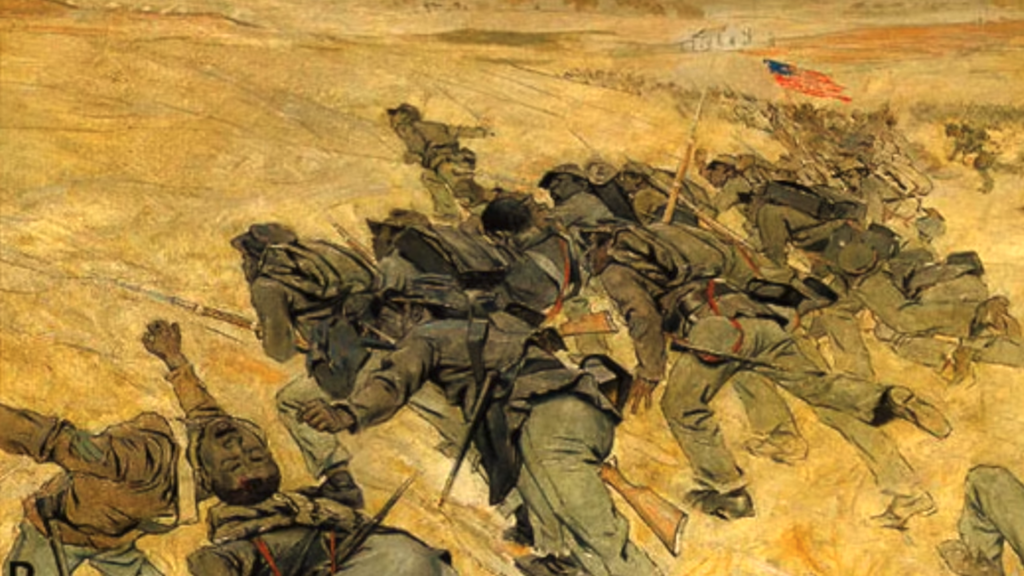
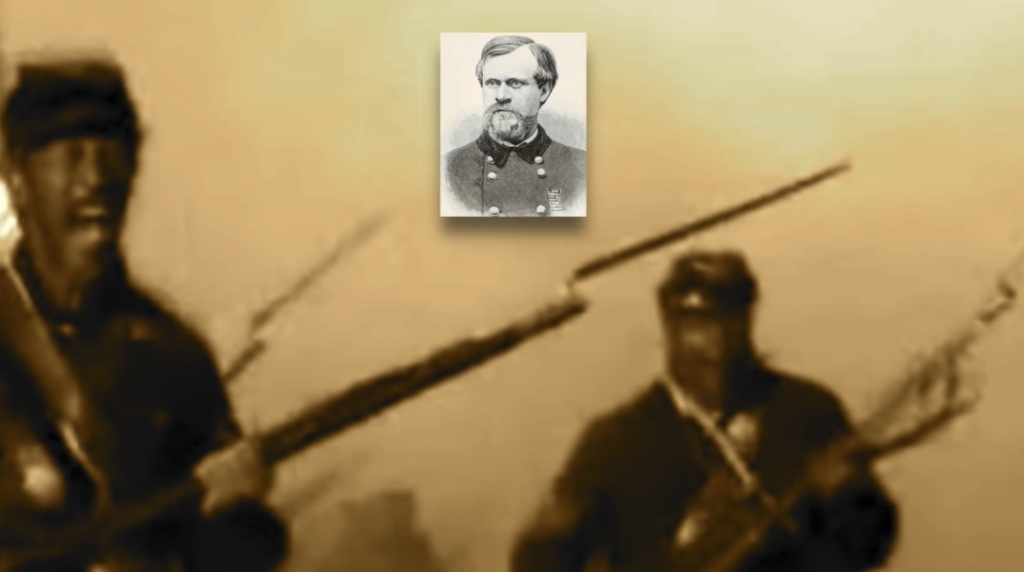
“(565) About eight hundred feet from the crater, having been reached, we leaped from the works and endeavored to make a rush for the crest. . . .
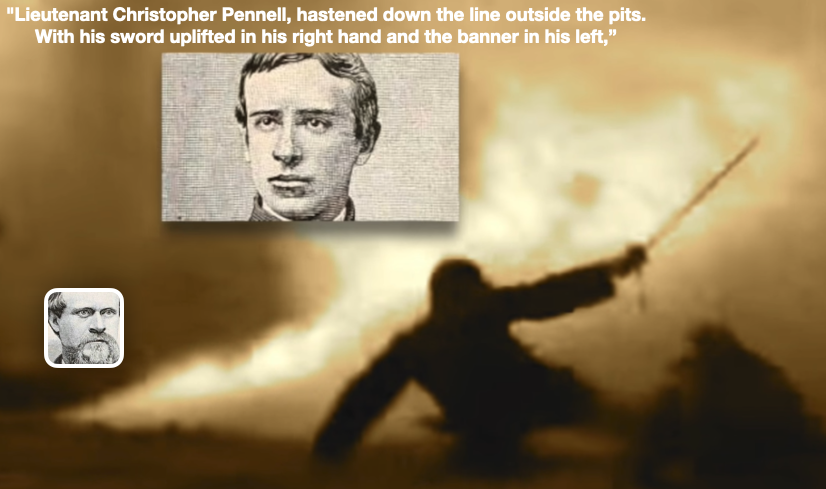
“Lieutenant Christopher Pennell, hastened down the line outside the pits. With his sword uplifted in his right hand and the banner in his left, he sought to call out the men along the whole line of the parapet. In a moment, a musketry fire was focused upon him, whirling him round and round several times before he fell. . . and he probably sleeps among the unknown whom we buried (unrecognized) in the long deep trench we dug.”

After being driven back into the crater, Thomas reorganized his men and followed orders to charge and capture the Confederates at the crest.


“As I gave the order, Lieutenant-Colonel John A. Bross, taking the flag into his own hands, was the first man to leap from the works into the valley of death below. He had attired himself in full uniform, evidently with the intent of inspiring his men.
He had hardly reached the ground outside the works before he fell to rise no more. He was conspicuous and magnificent in his gallantry. The black men followed into the jaws of death, and advanced until met by a charge in force from the Confederate lines. (566)”
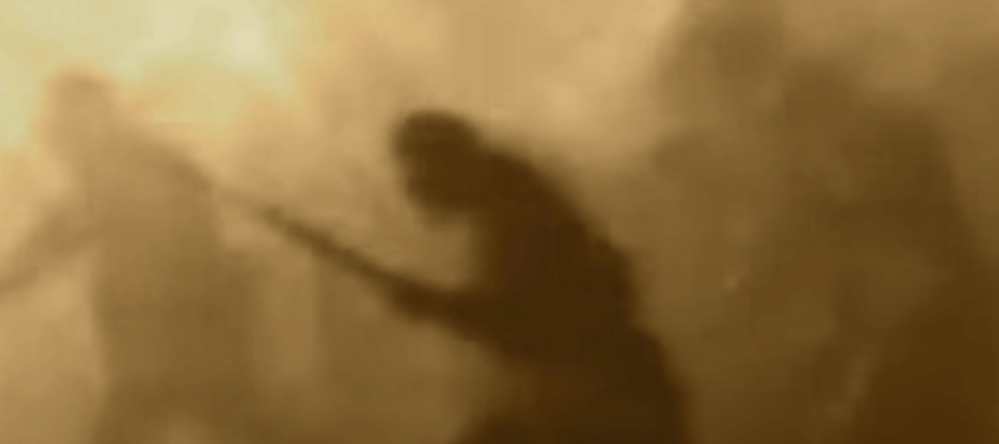
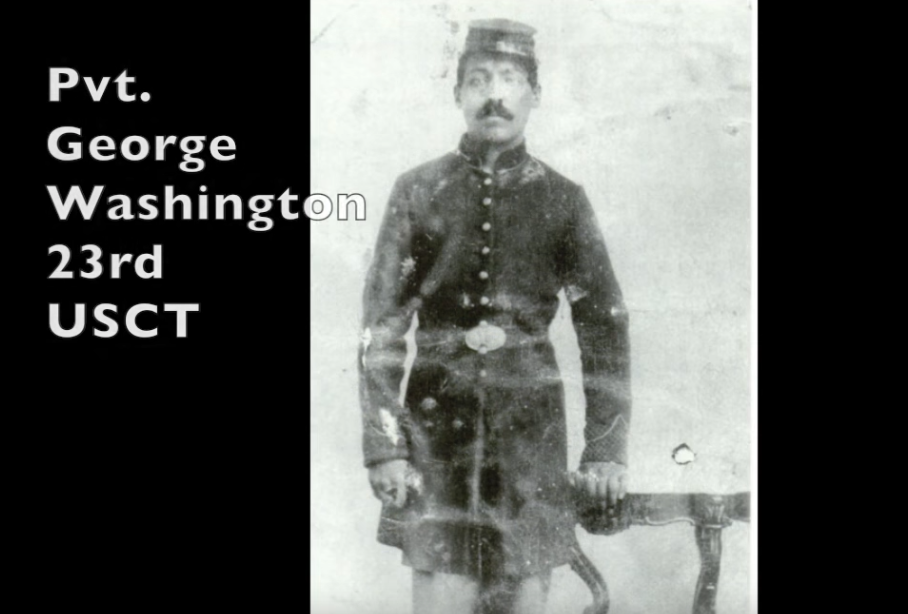

“The black men formed up promptly. There was no flinching on their part. They came to the shoulder like true soldiers, as ready to face the enemy and meet death on the field as the bravest and best soldiers that ever lived.” – Lt. Beecham

Beecham and the rest of the 23rd held a portion of the crater until around 2 p.m. when the Confederates counter-attacked and swept over them, killing many men who were attempting to surrender. The 23rd sustained the heaviest losses of the entire Fourth Division.”
Of this last scene in the battle the Confederate General Bushrod R. Johnson says in his official report:
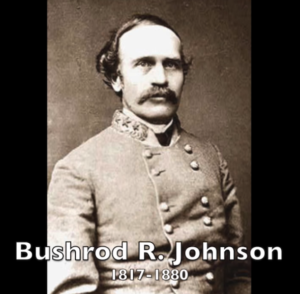
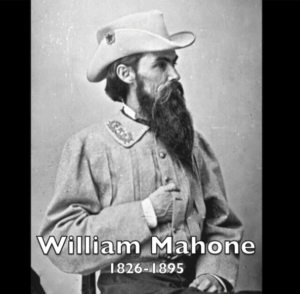
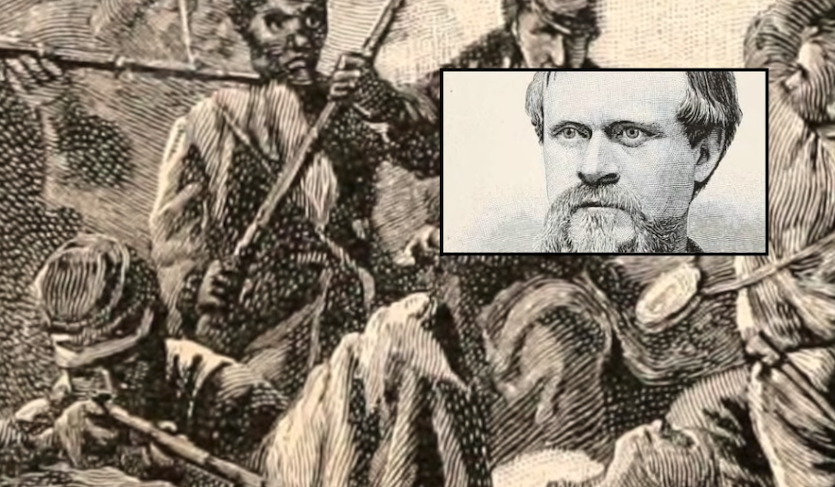
“One little band, after my second charge was repulsed, defended the entrenchments we had won from the enemy, exhibiting fighting qualities that I never saw surpassed in the war. This handful stood there without the slightest organization of company or regiment, each man for himself, until the enemy’s banners waved in their very faces. Then they made a dash for our own lines, and that at my order. It was now too late, as their second line of works was full of men, brought up from each flank, and our men were not only exposed to the terrible musketry fire in front, but to an enfilading fire of shell, grape and canister that no troops could withstand, and the charge was made through a line of white troops going to the rear. The slaughter was terrible.” – Thomas.
Gen. H. G. Thomas:
“I lost in all thirty-six officers and eight hundred seventy-seven men; total, nine hundred and thirteen. The Twenty-third Regiment entered at the charge with eighteen officers, it came out with seven. The Twenty-eighth entered with eleven officers, it came out with four. The Thirty-first had but two officers for duty that night.”
” Hereafter let no man say that black troops, led by graduates of Harvard and Yale, and the sons of the first families of the North, will not fight.”

References:
William Blair; William Pencak, eds. (2000). “Making and Remaking Pennsylvania’s Civil War.” University Park, PA: The Pennsylvania State University Press.
googlebooks.com 2 February 2003 Web. 20 January 2017.
pp. 151-153 – Sgt William Brock’s letter to “The Christian Recorder” from Camp near Hanover, Va, June 5, 1864.
Report of Brig. Gen. Edward Ferrero U. S. Army, commanding Fourth Division.
Title: The war of the rebellion: a compilation of the official records of the Union and Confederate armies. ; Series 1 – Volume 36 (Part I). library.cornell.edu 11 December 1997 Web. 2 February 2017. p. 986.
Grant Ulysses S. (1886). “Personal Memoirs of U.S. Grant.” Vol. 2. New York, NY: Charles L. Webster & Company. Internet Archives: archive.org. 27 Oct. 2009. Web. 12 Feb. 2012.
p. 315 – The effort was a stupendous failure . . . and all due to inefficiency on the part of the corps commander and the incompetency of the division commander (Ledlie) who was sent to lead the assault.”
Hall, H. Seymour. (1906). “Mine Run To Petersburg from War Talks in Kansas, Volume 1.” Kansas City, MO.:Press of the Franklin Hudson Publishing company.
Hess, Karl J. “Into the Crater: The Mine Attack at Petersburg.” Columbia, SC: University of South Carolina Press.
Hurd, Warren H. Diary 30 July 1864, Private Collection; Christian Recorder 3 June 1865. books.google.com 24 November 2005 Web. 20 December 2016.
Kinard, Jeff. (1995). “The Battle of the Crater.” Fort Worth, TX: Ryan Place Publishers.
Powell, Maj. William H. “The Battle of the Petersburg Crater.”
“Battles and Leaders. Vol. 4”. (1887). Robert Underwood Johnson, Clarence Clough Buel (Ed.). New York, NY: Century Co. Internet Archives: Digital Library of Free Books, Movies, Music, and Wayback Machine. 27 Oct. 2009. Web. 26 Sept. 2010. pp. 545-560.
James Price. “Freedom by the Sword: A Historian’s Journey Through The American Civil War” sablearm.blogspot.com 7 January 2011. Web. 10 January 2017.
Rickard, James H. (1894) “Services with Colored Troops in Burnside’s Corps.”
from Personal Narratives of events in the War of the Rebellion, being papers read before the Rhode island Soldiers and Sailors Historical Society. Fifth Series – No. 1(1894). Providence, RI: The Providence Press. googlebooks.com 2 February 2003 Web. 20 January 2017.
pp. 1-47.
Schmutz, John F. (2009). “The Battle of the Crater – A complete History.” Jefferson, North Carolina: McFarland & company, Inc. books.google.com 24 November 2005 Web. 20 December 2016.
Slotkin, Richard. “The Battle of the Crater.” July 29, 2014, The New York Times.
opinionator.blogs.nytimes.com 3 February 2006 Web. 29 July 2014.
Slotkin, Richard. (2009). “No Quarter: The Battle of the Crater 1864.” New York, NY: Random House, Inc.
googlebooks.com 2 February 2003 Web. 20 January 2017.
Stevens, Michael E. ed. (1999). “As If it Were Glory: Robert Beecham’s Civil War from the Iron Brigade to the Black Regiments.” Lanham, MD: Rowman & Littlefield Publishers, Inc. googlebooks.com 2 February 2003 Web. 20 January 2017. p. 184.
Bryce A. Suderow, “The Battle of the Crater: The Civil War’s Worst Massacre,” Civil War History Vol. 43 (September, 1997), p. 221.
Thomas, Gen. Henry G. “The Colored Troops at Petersburg.” in
“Battles and Leaders. Vol. 4”. (1887). Robert Underwood Johnson, Clarence Clough Buel (Ed.). New York, NY: Century Co. Internet Archives: Digital Library of Free Books, Movies, Music, and Wayback Machine. archive.org 27 Oct. 2009. Web. 26 Sept. 2010. pp. 563-567.
“The War of the Rebellion: a compilation of the official records of the Union and Confederate armies.” (1902). NOTE on authors: Robert N. Scott compiled and edited v. 1-18, 1880-87, and also collected the greater part of the material for v. 19-36, 1887-91. After his death in 1887 the work was continued by Henry M. Lazelle, 1887-89, and by a board of publication, 1889-99, consisting of George B. Davis, 1889-97, Leslie J. Perry, 1889-99, Joseph W. Kirkley, 1889-99, and Fred C. Ainsworth, 1898-99; from 1899-1901 edited by Fred C. Ainsworth and Joesph W. Kirkley. Gettysburg, Pa: Gettysburg National Historical Society. Print.
Volume XXXVI – in Three Parts. 1891. (Vol. 36, Chap. 48)
Chapter XLVIII – Operations in Southeastern Virginia and North Carolina. May 1-June 12, 1864.
Part I – Reports https://babel.hathitrust.org/cgi/pt?id=coo.31924097311744&view=1up&seq=3&skin=2021
II – Reports, Union and Confederate Correspondence, etc. https://babel.hathitrust.org/cgi/pt?id=coo.31924080787470&view=1up&seq=3&skin=2021
Part III – Union and Confederate Correspondence, etc. https://babel.hathitrust.org/cgi/pt?id=coo.31924077728271&view=1up&seq=3&skin=2021
Volume XL – in Three Parts. 1892. (Vol. 40, Chap. 52)
Chapter LII – Operations in Southeastern Virginia and North Carolina. June 13-July 31, 1864.
Part I – Reports https://babel.hathitrust.org/cgi/pt?id=uc1.c035413009&view=1up&seq=7&skin=2021
Union Maj. Gen. U.S. Grant first reports on the Crater and the institution of a Committee of Inquiry
CITY POINT, VA., July 30, 186410 a.m. Finding that my effort to surprise the enemy by sending an army corps and three divisions of cavalry to the north bank of the James River, under cover of night, for the purpose of getting on to the rail- roads north of Richmond, drew all of his forces from Petersburg except three divisions, I determined to attack and try to carry the latter place. The enemy’s earth-works are as strong as they can be made, and the ground is very broken and favorable for defense. Having a mine prepared running for a distance of eighty feet along the enemy’s parapet, and about twenty-two feet below the surface of the ground, ready loaded, and covered ways made near to his line, I was strongly in hopes, by this means of opening the way, the assault would prove successful. The mine was sprung a few minutes before 5 o’clock this morning, throwing up four guns of the enemy and burying most of a South Carolina regiment. Our men immediately took possession of the crater made by the explosion, and a considerable distance of the parapet to the right of it, as well as a short work in front, and still hold them. The effort to carry the ridge beyond, and which would give us Petersburg and the south bank of the Appomattox, failed. As the line held by the enemy would be a very bad one for us, being on a side hill, the crest on the side of the enemy, and not being willing to take the chances nf a slaughter sure to occur if another assault was made, I have directed the withdrawal of our troops to their old lines. Although just from the front, I have little idea of the casualties. I think, however, our loss will be but a few hundred, unless it occurs in withdrawing, which it may not be practicable to do before night. I saw about 200 prisoners taken from the enemy. Hancock and Sheridan returned from the north side of the river during the night, and are now here. U. S. GRANT, General. Maj. Gen.
To H. W. HALLECK, Chief of Staff. CITY POINT, VA., August 1, 1864. The loss in the disaster of Saturday last foots up about 3,500 of whom 450 men were killed and 2,000 wounded. It was the saddest affair I have witnessed in the war. Such opportunity for carrying fortifications I have never seen and do not expect again to have. The enemy with a line of works five miles long had been reduced by our previous movements to the north side of James River to a force of only three divisions. This line was undermined and blown up, carrying a battery and most of a regiment with it. The enemy were taken completely by surprise and did not recover from it for more than an hour. The crater and several hundred yards of the enemy’s line to the right and left of it and a short detached line in front of the crater were occupied by our troops without opposition. Immediately in front of this and not 150 yards off, with clear ground intervening, was the crest of the ridge leading into town, and which, if carried, the enemy would have made no resistance, but would have continued a flight already commenced. It was three hours from the time our troops first occupied their works before the enemy took possession of this crest. I am constrained to believe that had instructions been promptly obeyed that Petersburg would have been carried with all the artillery and a large number of prisoners without a loss of 300 men. It was in getting back to our lines that the loss was sustained. The enemy attempted to charge and retake the line captured from them and were repulsed with heavy loss by our artillery; their loss in killed must be greater than ours, whilst our loss in wounded and captured is four times that of the enemy.- U. S. GRANT, Lieutenant- General. Major-General HALLECK, Washington, D. C.
ADDENDA. CITY POINT, August 2, 1864 9.30 p.m.
To Major-General HALLECK, Chief of Staff:
I have the honor to request that the President may direct a court of inquiry, to assemble without delay at such place as the presiding officer may appoint, to examine into and report upon the facts and circumstances attending the unsuccessful assault on the enemy’s position in front of Petersburg on the morning of July 30, 1864, and also to report whether, in their judgment, any officer or officers are censurable for the failure of the troops to carry into successful execution the orders issued for the occasion, and I would suggest the following detail: Maj. Gen. W. S. Hancock, Brig. Gen. R. B. Ayres, Brig. Gen. N. A. Miles, Volunteer service; Col. E. Schriver, inspector-general and recorder. U. S. Grant, Lieutenant General
pp. 17-18 https://babel.hathitrust.org/cgi/pt?id=uc1.c035413009&view=1up&seq=41&skin=2021&q1=court%20of%20inquiry
Record of the Court of Inquiry on the Mine Explosion. RECORD OF THE PROCEEDINGS OF A COURT OF INQUIRY INSTITUTED BY VIRTUE OF THE FOLLOWING ORDER: SPECIAL ORDERS, 258 WAR DEPT., ADJT. GENERALS OFFICE, No. 258. Washington, D. C., August 3, 1864. * * * * * * 43. By direction of the President, a Court of Inquiry will convene in front of Petersburg at 10 a.m. on the 5th instant, or as soon thereafter as practicable, to examine into and report upon the facts and circumstances attending the unsuccessful assault on the enemy’s position on the 30th of July, 1864. The Court will report their opinion whether any officer or officers are answerable for the want of success of said assault, and, if so, the name or names of such officer or officers. Detail for the Court: Maj. Gen. W. S. Hancock, U. S. Volunteers; Brig. Gem lit B. Ayres, U. S. Volunteers; Brig. Gen. N. A. Miles, U. S. Volunteers; Col. E. Schriver, inspector-general, U. S. Army, judge advocate. By order of the Secretary of War: E. D. TOWNSEND, Assistant Adjutant- General.
FIRST DAY. COURT-ROOM, HEADQUARTERS SECOND CORPS, August 6, 1864. The Court met pursuant to the foregoing orders: Present, Major-General Hancock, Brigadier-Generals Ayres and Miles, and Colonel Schriver, judge-advocate. The order instituting the Court was read and the Court and judge- advocate were sworn according to law. The judge-advocate then presented and read the orders issued from the headquarters of the Army of the Potomac on the 29th of July, 1864, containing the instructions for the guidance of all concerned ,in the operations against the enemy’s position before Petersburg on the 30th of July, as follows:
ORDERS. HEADQUARTERS ARMY OF THE POTOMAC, July 29, 1864. The following instructions are issued for the guidance of all concerned:
1. As soon as it is dark Major-General Burnside, commanding Ninth Corps, will withdraw his two brigades under General White, occupying the entrenchments between the plank and Norfolk roads, and bring them to his front. Care will be taken not to interfere with the troops of the Eighteenth Corps moving into their position in rear of the Ninth Corps. General Burnside will form his troops for assaulting the enemy’s works at daylight of the 30th, prepare his parapets and abatis for the passage of the columns, and have the pioneers equipped for work in opening passages for artillery, destroying enemy’s abatis, & c., and the entrenching tools distributed for effecting lodgment, & c.
2. Major-General Warren, commanding Fifth Corps, will reduce the number of his troops holding the entrenchments of his front to the minimum and concentrate all his available force on his right, and hold them prepared to support the assault of Major-General Burnside. The preparations in respect to pioneers, entrenching tools, & c., enjoined upon the Ninth Corps will also be made by the Fifth Corps.
3. As soon as it is dark Major-General Ord, commanding Eighteenth Corps, will relieve his troops in the trenches by General Motts division, of the Second Corps, and form his corps in rear of the Ninth Corps and be prepared to support the assault of Major-General Burnside.
4. Every preparation will be made for moving forward the field artillery of each corps.
5. At dark Major-General Hancock, commanding Second Corps, will move from Deep Bottom to the rear of the entrenchments now held by the Eighteenth Corps, resume the command of Motts division, and be prepared at daylight to follow up the assaulting and supporting columns, or for such other operations as may be found necessary.
6. Major-General Sheridan, commanding Cavalry Corps, will proceed at dark from the vicinity of Deep Bottom to Lees Mill, and at daylight will move with his whole corps, including Wilson’s division, against the enemy’s troops defending Petersburg on their right by the roads leading to that town from the southward and westward.
7. Major Duane, acting chief engineer, will have the pontoon trains parked at convenient points in the rear prepared to move. He will see that supplies of sand-bags, gabions, fascines, & c., are in depot near the lines ready for use. He will detail engineer officers for each corps.
8. At 3.30 in the morning of the 30th Major-General Burnside will spring his mine and his assaulting columns will immediately move rapidly upon the breach, seize the crest in the rear, and effect a lodgment there. He will be followed by Major-General Ord, who will support him on the right, directing his movement to the crest indicated, and by Major-General Warren, who will support him on the left. Upon the explosion of the mine the artillery of all kinds in battery will open upon those points of the enemy’s works whose fire covers the ground over which our columns must move, care being taken to avoid impeding the progress of our troops. Special instructions respecting the direction of lire will be issued through the chief of artillery.
9. Corps commanders will report to the commanding general when their preparations are complete, and will advise him of every step in the progress of the operation and of everything important that occurs.
10. Promptitude, rapidity of execution, and cordial co-operation are essential to success, and the commanding general is confident that this indication of his expectations will insure the hearty efforts of the commanders and troops.
11. Headquarters during the operation will be at the headquarters of the Ninth Corps.
By command of Major-General Meade: S. WILLIAMS, Assistant Adjutant-General.
Whereupon the Court directed the judge-advocate to notify all the officers named therein of the institution and design of the Court, so as to enable them to be present during its sessions, which was done by addressing the following circular to each:
COURT-ROOM, HEADQUARTERS SECOND CORPS, August 6, 1864.
SIR: The Court of Inquiry instituted by War Department Special Orders, No. 258, of August 3, 1864, for the investigation of the facts and circumstances which attended the unsuccessful assault on the enemy’s lines before Petersburg on the 30th ultimo, will meet here on the 8th instant, and the days following, at 10 a.m., and l am directed to acquaint you thereof; so that you may be present at the Courts sessions should you desire to do so. Please acknowledge the receipt of this communication to me at the headquarters of the Army of the Potomac. Very respectfully, sir, your obedient servant,
ED. SCHRIVER, inspector-General, Judge-Advocate. (Addressed to Major-Generals Meade, Burnside, Warren, Sheridan, and Ord, Brigadier-Generals White, Hunt, and Mott, and Major Duane.) The Court then adjourned to meet at 10 a.m. on the 8th instant.
pp. 42-44 https://babel.hathitrust.org/cgi/pt?id=uc1.c035413009&view=1up&seq=66&skin=2021&q1=court%20of%20inquiry
p. 44 Gen. Meade sworn in for the first time
pp. 86-87 General Meade’s main testimony https://babel.hathitrust.org/cgi/pt?id=uc1.c035413009&view=1up&seq=110&skin=2021&q1=court%20of%20inquiry
pp. 58-75 – Gen. Ambrose Burnside full testimony https://babel.hathitrust.org/cgi/pt?id=uc1.c035413009&view=1up&seq=82&skin=2021&q1=court%20of%20inquiry
TESTIMONY OF LIEUT. GEN. U. S. GRANT.
Lieut. Gen. U. S. GRANT, U. S. Army, being sworn and
examined by the JUDGE-ADVOCATE, says: Question. Will you please to state what in your judgment caused the failure of the attack on the enemy’s lines on the 30th of July?
Answer. It seemed to me that it was perfectly practicable for the men, if they had been properly led, to have gone straight through the breach which was caused by the explosion of the mine, and to have gone to the top of Cemetery Hill. It looked to me, from what I could see and hear, that it was perfectly practicable to have taken the men through; but whether it was because the men themselves would not go, or whether it was because they were not led, I was not far enough to the front to be qualified to say.
Question. What orders which you issued were not executed, if any?
Answer. I could send you copies of all the dispatches that I wrote. The orders for the assault were issued by General Meade in obedience to general instructions from me. I saw the detailed order of General Meade before the mine was exploded, and I thought that the execution of that order was practicable. That order I presume you have before you. My order was to General Meade, and then General Meade made his order from what I directed him to do, and sent me a copy of it, and I thought It was all that could be required. I recollect that, failing on the north bank of the river to surprise the enemy as we expected or hoped to do, but instead of that drew a large part of his force to the north side, I telegraphed to General Meade that we would now take advantage of the absence of that force of the enemy to explode the mine and make an assault on Petersburg.
By the COURT: Question. From your information how many of the enemy were in Petersburg at the time of this assault?
Answer. My information was that three divisions were left in Petersburg, with one brigade absent from those divisions, (Gen. Bushrod Johnson’s). From the best evidence none of the enemy’s troops crossed the James River until 2 o’clock of the 30th of July, on their way back. Then they had fully sixteen miles to travel to get back, with, however, the advantage of a railroad near them to carry many of the men. The distance I guess at when I say sixteen miles.
pp. 82-83 – Gen. U.S. Grant.
TESTIMONY OF COL. H. G. THOMAS.
Col. H. G. THOMAS, Nineteenth U. S. Colored Troops, being duly sworn, says to questions by JUDGE-ADVOCATE:
Question. Were you at the assault on the 30th of July, and what was your command?
Answer. I was at the assault on the 30th of July, and commanded the Second Brigade, Fourth Division, Ninth Corps (colored troops).
Question. What was the formation of your troops in going to the assault?
Answer. The formation was by file left in front, which brought us faced by the rear rank when we made the charge. Question. The head of your troops struck the enemy’s line, where?
Answer. I forced my brigade around the right of the crater, contrary to orders, because the crater was so full that no man could get through that is, I left two staff officers to force them through. I went straight to the front and filed to the right, and went into these rifle-pits in the enemy’s line as far as the head of the First Brigade of our division, which I was ordered to support.
Question. Did you get beyond the line of the crater with your troops?
Answer. I did sir.
Question. flow far? Answer. I should say about between 300 and 400 yards to the right of the crater, and in front of it. I was ordered to support the First Brigade when it made its charge. Question. Did you get beyond the enemy’s line?
Answer. I did, sir. I led a charge which was not successful. The moment I reached the head of the First Brigade I started out the Thirty-first Colored Regiment which was in front, but it lost its three ranking officers in getting in position, and did not go out well.
Question. What, in your opinion, were some of the causes of the failure of the general assault on that day?
Answer. So far as I can judge from my own stand-point, my utter inability to make a decent charge with my own brigade was the fact that the pits into which we were sent were entirely occupied by dead and dying rebel troops and our own, from the First Division of our corps, General Ledlie’s. There was no room for us to move up. We were delayed, I should think, an hour and a half, in the covered way through which we moved, from the fact, so far as I can learn, that the First Division did not make the charge. We were to occupy the pits after they made the charge. (105)
Question. Do you know why the First Division did not go forward?
Answer. I do not, sir.
Question. Did you see any of the appliances for overcoming obstacles that usually accompany troops working parties with tools?
Answer. I saw no such preparations to remove obstacles in the enemy’s line. I had no such assistance.
Question Do you think the mode of marching up your command was a judicious one the form I mean?
Answer. No, sir; it was injudicious, for two reasons. First, we moved up by the flank. That I consider injudicious. And secondly, we were ordered up left in front which made us face by the rear rank, which was not a satisfactory way of
maneuvering.
Question. Was it a verbal or a written order, and by whom was it issued?
Answer. It was a verbal order issued by General Ferrero about 11 o’clock on the night before. The order to me that night was to go up by division, follow the First Brigade, and to move left in front. But early in the morning I learned from a staff officer whom I sent out to tell me when the First Brigade moved, that it was filing along the covered way. My instructions were to follow the First Brigade. I was detained at least an hour and a half in the covered way by the troops in front, and by the order of the assistant inspector-general of the corps. He, finding the pits into which we were to go full of troops, suspended the other order until lie could see General Burnside.
Question. How did your particular command retire from the front ?
Answer. In confusion.
Question. Driven?
Answer. Driven back by a charge of the enemy.
Question. And not by any orders?
Answer. No, sir; they received no orders. They were ordered to stop by myself and all my staff officers who were in the pits. When I got into this position on the right of the crater the fire was very severe; there was also a very severe enfilading fire from the right. I attempted one charge without success the moment I reached there. I could not get more than fifty men out. I sent word to General Burnside by Major Van Buren, of his staff as he was the only staff officer I saw in the pits except my own that unless a movement was made to the right to stop the enfilading fire not a man could live to reach the crest; but that I should try another charge in ten minutes, and hoped I would be supported. In about eight minutes I received a written order from General Ferrero in pretty near these words, Colonels Sigfried and Thomas, commanding First and Second Brigades: If you have not already done so, you will immediately proceed to take the crest in your front. It was signed in the ordinary official manner, By order of General Ferrero: George A Hicks , captain and assistant adjutant-general. I cannot produce that order because I destroyed it when I was captured in Petersburg. Colonel Sigfried had, I think, already received it as he was in the crater. I sent word to Colonel Sigfried’s brigade, on my right, where I supposed the colonel to be, that I was about to charge, that we should go over with a yell, and that I hoped to be supported. I went over with two regiments and part of a third, but I was driven back. The moment they came back the white troops in the pits all left and they after them. I was not supported at all in my charge.
Question. Where was the division commander all this time? Answer. I do not know. When I went up with my brigade he was in the bomb-proof on the left, with the commanding officer of the First Division. Generals Willcox, Ledlie, and Ferrero were in the bomb-proof on the left.
Question. Was the bomb-proof a good place to see what was going on?
Answer. No, sir; there were places near there here something could be seen, but the earth about the crater prevented almost anything being seen immediately to the left of it. The dirt was thrown up very high. There were, I think, however, places near there where a view could be got. (106)
Question. From what you know of affairs that day, is it your opinion that the assault ought to have been successful if the troops engaged in it had performed their duty?
Answer. Going up so late as I did I am not a good judge, but I think, from what I could see at the late hour at which I got in, that if the division that went in first had gone ahead there is no question of our taking the crest on that ridge (Cemetery Hill), hardly with the loss of a man. We waited in the covered way over an hour with almost no musketry on our right. We were detained there; we could not get up.
By the COURT:
Question. Did you ever go over that ground afterward?
Answer. I did, sir. Question. Under what circumstances? Answer. I went over it two days afterward, the 1st of August, when the flag of truce was out.
Question. Did you see anything in the nature of the enemy’s defenses that would change the opinion you formed on the day of the assault?
Answer. No, sir.
Question. Did you see any obstacles in the nature of the ground?
Answer. No, sir.
Question. Did you have an opportunity of seeing what the enemy had on the top of Cemetery Hill?
Answer. No, sir; I did not have an opportunity of seeing just what they might have had there.
Question. Did you see any works there?
Answer. No, sir; I did not think there were any.
Question. How did the colored troops behave?
Answer. They went up as well as I ever saw troops go up: well closed, perfectly enthusiastic. They came back very badly. They came back on a run, every man for himself. It is but justice to the line officers to say that more than two-thirds of them were shot, and to the colored troops that the white troops were running back just ahead of them.
pp. 104-107 https://babel.hathitrust.org/cgi/pt?id=uc1.c035413009&view=1up&seq=128&skin=2021&q1=court%20of%20inquiry
FINDING
The Court, after discussion with closed doors, adjourned to meet at 10 o’clock on the 9th of September. SEVENTEENTH DAY. HEADQUARTERS SECOND CORPS, The Court met pursuant to adjournment. September 9, 1864. Present, Major-General Hancock, president, Brigadier-Generals Ayres and Miles, and Colonel Schriver, judge-advocate. The proceedings of the fourteenth, fifteenth, and sixteenth days were read and approved. The Court, with closed doors, then resumed the discussion of the testimony, and decided on the following finding and opinion:
FINDING.
After mature deliberation on the testimony adduced the Court find the following facts and circumstances attending the unsuccessful assault on the 30th of July:
The mine, quite an important feature in the attack, was commenced by Major-General Burnside soon after the occupation of his present lines without any directions obtained from the headquarters of the Army of the Potomac. Although its location (and in this the engineers of the army concur) was not considered by Major-General Meade a proper one, it being commanded from both flanks and reverse, the continuance of the work was sanctioned.
It was not the intention of the lieutenant-general commanding or of the major-general commanding the Army of the Potomac, it is believed, to use the mine in the operations against Petersburg until it became known that the enemy had withdrawn a large part of his forces to the north side of the James River, when it was thought advantage might be taken of it in an assault. All the Union troops sent north of the James had been recalled in time to participate in the assault, so that the whole of the forces operating in front of Petersburg were disposable. The mine was ordered to be exploded at 3.30 a.m., but owing to a defective fuse it did not take place till 4.45. (126)
The detailed order or plan of operations issued by Major-General Meade is in accordance with General Grant’s instructions, and was seen and approved by the latter previous to its publication. (It is marked K in the Appendix.)
It is the concurrent testimony that had the order been carried out, success would have attended the attack. Also it is in evidence that General Meade met General Burnside and three of his division commanders the day before the assault and impressed upon them that the operation was one of time; that unless prompt advantage were taken of the explosion of the mine to gain the crest it would be impossible to get it or the troops to remain outside of their lines.
That order directed that General Burnside should form his troops (the Ninth Corps) for assaulting, and that General Ord, commanding the Eighteenth Corps, and General Warren, commanding the Fifth Corps, should support the assault on the right and left respectively. Major-General Burnsides order (No. 60, Appendix) directed Brigadier-General Ledlie’s division, immediately on the explosion of the mine, to be moved forward and crown the crest known as Cemetery Hill. Brigadier-General Willcox was to move his division forward as soon as possible after General Ledlie’s, bearing off to the left, and Brigadier-General Potter was to follow and go to the right. Brigadier-General Ferrero was to move his (colored) division next, and pass over the same ground that General Ledlie’s did.
Five minutes after the explosion of the mine General Ledlie’s division went forward, and it was followed by those of Generals Willcox and Potter, though it is in evidence that the latter did not move in the prescribed order, and that they were not formed in a manner to do the duty assigned them.
General Ledlie’s division, instead of complying with the order, halted in the crater made by the explosion of the mine and remained there about an hour, when Major-General Meade received the first intimation of the fact through a dispatch from Lieutenant-Colonel Loring, assist ant inspector-general of the Ninth Corps, intended for General Burnside, in which he expressed the fear that the men could not be induced to advance.
This crater was on the enemy’s line of works, and was 50 to 60 yards long, 20 yards wide, and 20 to 25 feet deep. It was about 500 yards from the cemetery crest.
General Burnside was then (at 5.40 a.m. ordered to push forward to the crest all his own troops, and to call on General Ord to move for- ward his troops at once. It is in evidence that when the order was communicated to General Ferrero, commanding the colored division, he said he could not put in his troops until the troops already in front should be moved out of the way. They did go forward, however, after some delay, but only to be driven back and in their flight to rush impetuously against other troops, destroying their formation and producing disorder.
At 6.10 a.m., inquiry being made of General Burnside if it would be an advantage for Warrens supporting force to go in at once on the left, the answer was there is scarcely room for it in our immediate front. The importance of the utmost promptness and the securing of the crest at once at all hazards were urged upon him at 6.50 a.m.
At 7.20 a.m. General Burnside reported to General Meade that he was doing all in his power to push forward the troops, and, if possible, carry the crest, and also that the main body of General Potters division was beyond the crater. It does not appear in evidence, however, (127) that they ever got any considerable distance, not exceeding 200 yards, beyond the crater toward the crest, whence they were driven back
immediately. This was also the fate of the few colored troops who got over the enemy’s line for a moment.
At 9 a.m. General Burnside reported many of the Ninth and Eighteenth Corps were retiring before the enemy, and then was the time to put in the Fifth Corps. It having just been reported, however, by two staff officers (not General Burnsides) that the attack on the right of the mine had been repulsed, and that none of the Union .troops were beyond the line of the crater the commanding general thought differently, and the lieutenant-general concurring General Burnside was directed at 9.50 a. m. to withdraw to his own entrenchments immediately or at a later period, but not to hold the enemy’s line any longer than was required to withdraw safely his men. This order brought General Burnside to General Meade’s headquarters, where he remonstrated against it, saying by night-fall he could carry the crest. No other officer who was present, and who has testified before the Court, concurred in this opinion. The troops in the crater were then ordered to retire, but before it could be effected they were driven out with great loss at 2 p.m. These troops, however, were making preparations to retire, and but for that would probably not have been driven out at that time.
The Fifth Corps did not participate at all in the assault, and General Ord’s command only partially, because the condition of affairs at no time admitted of their co-operation as was contemplated by the order of assault.
The causes of failure are:
1. The injudicious formation of the troops in going forward, the movement being mainly by flank instead of extended front. General Meade’s order indicated that columns of assault should be employed to take Cemetery Hill, and that proper passages should be prepared for those columns. It is the opinion of the Court that there were no proper columns of assault. The troops should have been formed in the open ground in front of the point of attack parallel to the line of the enemy’s works. The evidence shows that one or more columns might have passed over at and to the left of the crater without any previous preparation of the ground.
2. The halting of the troops in the crater instead of going forward to the crest when there was no fire of any consequence from the enemy.
3. No proper employment of engineer officers and working parties, and of materials and tools for their use, in the Ninth Corps.
4. That some parts of the assaulting column were not properly led.
5. The want of a competent common head at the scene of the assault to direct affairs as occurrences should demand.
Had not failure ensued from the above causes, and the crest been gained, the success might have been jeopardized by the failure to have prepared in season proper and adequate debouchays through the Ninth Corps lines for troops, and especially for field artillery, as ordered by Major-General Meade. The reasons why the attack ought to have been successful are:
1. The evident surprise of the enemy at the time of the explosion of the mine and for some time after.
2. The comparatively small force in the enemy’s works.
3. The ineffective fire of the enemy’s artillery and musketry, there being scarcely any for about thirty minutes after the explosion, and our artillery being just the reverse as to time and power. (128)
4. The fact that some of our troops were able to get 200 yards beyond the crater toward the crest, but could not remain there or proceed farther for want of supports or because they were not properly formed or led.
OPINION.
The Court having given a brief narrative of the assault, and the facts and circumstances attending it, it remains to report that the following- named officers engaged therein appear from the evidence to be answerable for the want of success which should have resulted:
I. Maj. Gen. A. E. Burnside, U. S. Volunteers, he having failed to obey the orders of the commanding general.
1. In not giving such formation to his assaulting column as to insure a reasonable prospect of success.
2. In not preparing his parapets and abatis for the passage of the columns of assault.
3. In not employing engineer officers, who reported to him, to lead the assaulting columns with working parties, and not causing to be provided proper materials necessary for crowning the crest when the assaulting columns should arrive there.
4. In neglecting to execute Major-General Meade’s orders respecting the prompt advance of General Ledlie’s troops from the crater to the crest; or, in default of accomplishing that, not causing those troops to fall back and give place to other troops more willing and equal to the task, instead of delaying until the opportunity passed away, thus affording time for the enemy to recover from his surprise, concentrate his fire, and bring his troops to operate against the Union troops assembled uselessly in the crater. Notwithstanding the failure to comply with orders and to apply proper military principles ascribed to General Burnside, the Court is satisfied he believed that the measures taken by him would insure success.
II. Brig. Gen. J. H. Ledlie, U. S. Volunteers, he having failed to push forward his division promptly according to orders and thereby blocking up the avenue which was designed for the passage of troops ordered to follow and support his in the assault. It is in evidence that commander reported to General Burnside that his troops could not be got forward, which the Court regards as a neglect of duty on the part of General Ledlie, inasmuch as a timely report of the misbehavior might have enabled General Burnside, commanding the assault, to have made other arrangements for prosecuting it before it became too late. Instead of being with his division during this difficulty in the crater, and by his personal efforts endeavoring to lead his troops forward, he was most of the time in a bomb-proof ten rods in rear of the main line of the Ninth Corps works, where it was impossible for him to see anything of the movement of troops that was going on.
III. Brig. Gen. Edward Ferrero, U. S. Volunteers.
1. For not having all his troops formed ready for the attack at the prescribed time.
2. Not going forward with them to the attack.
3. Being in a bomb-proof habitually, where he could not see the operation of his troops, showing by his own order issued while there that he did not know the position of two brigades of his division or whether they had taken Cemetery Hill or not. (129)
IV. Col. Z. R. Bliss, Seventh Rhode Island Volunteers, commanding First Brigade, Second Division, Ninth Corps. In this, that he remained behind with the only regiment of his brigade which did not go forward according to the orders and occupied a position where he could not properly command a brigade which formed a portion of an assaulting column, and where he could not see what was going on.
V. Brig. Gen. 0. B. Wilicox, U. S. Volunteers.
The Court is not satisfied that General Willcox’s division made efforts commensurate with the occasion to carry out General Burnsides order to advance to Cemetery Hill, and they think that more energy might have been exercised by Brigadier-General Wilicox to cause his troops to go forward to that point. Without intending to convey the impression that there was any disinclination on the part of the commanders of the supports to heartily co-operate in the attack on the 30th of July, the Court express their opinion that explicit orders should have been given assigning one officer to the command of all the troops intended to engage in the assault when the commanding general was not present in person to witness the operations.
WINFD S. HANCOCK, Major- General, U. S. Volunteers, President of Court. ED. SCHRIVER, – Inspector-General U. S. Army, Judge-Advocate. The court then adjourned sine die. WINFD S. HANCOCK, Major- General, U. S. Volunteers, President of Court. ED. SCHRIVER, Inspector-General U. S. Army, Judge-Advocate.
pp. 125-129 – FINDING of the Court https://babel.hathitrust.org/cgi/pt?id=uc1.c035413009&view=1up&seq=149&skin=2021&q1=court%20of%20inquiry
Report of Confederate General Bushrod Johnson, commanding, on The Crater battle:
pp. 791-792 key excerpts
In the events of the 30th of July there will perhaps be found nothing more heroic or worthy of higher admiration than this conduct of the Twenty-second and Twenty-third South Carolina Regiments. Colonel Goode, commanding Wise’s brigade, caused the Fifty-ninth Virginia Regiment, under Captain Wood, to be formed in a ditch running perpendicular to the rear of the main work, and when the enemy attempted some five times to form in rear of the breach for the purpose of charging to the right, and after they had planted four colors on the line, by which the movement designated was to be made, this regiment, under Captain Wood, and the Twenty-sixth Virginia Regiment, under Captain Steele, with the Twenty-second and Twenty-third South Carolina Regiments and two guns of battery near the junction of the Baxter and Jerusalem plank roads, opened with a fire that drove them precipitately back to the crater.
In this way the conflict was maintained from 5 till nearly 10 a. m. with coolness and steadiness by deter- mined men and officers on both flanks of the breach, and with a success worthy of. much praise and with great damage to the enemy. The assailing force of the enemy, consisting of the Ninth and parts of two other army corps, was directed upon the breach at Pegram’s salient, and was held in check by little more than three regiments of Elliott’s, two regiments of Ransoms, and two regiments of Wises brigades, with the efficient aid of artillery, especially of Wright’s battery and the four mortars, under Captain Lamkin, on the Jerusalem plank road. The enemy also made considerable demonstration in front of Wise’s brigade, and appeared in front of their works on south side of Baxter road. On the left of the crater a large force was advanced to threaten the works occupied by Ransom’s brigade. It came forward in irregular order and took shelter at the foot of a steep hill, which descends to Taylors Creek, in front of that portion of our line. This force was engaged without any important results by Ransoms brigade and the right howitzer of Slaten’s battery.
Our whole line, from the right of Colquitt’s to the left of Gracie’s brigade, suffered from artillery fire. The Sixty-first North Carolina Regiment, of Hoke’s division, sent to re-enforce the troops engaged at the breach, arrived at the same time with Mahone’s division and proceeded to form in the ravine in rear of Pegram’s salient for the purpose of charging the enemy in the breach. General Mahone had placed one brigade in position, and was waiting for the second to come up, when the enemy advanced upon his line of battle. He met their advance by a charge, in which the Twenty-fifth and Forty-ninth North Carolina and the Twenty-sixth and part of the Seventeenth South Carolina Regiments, all under Colonel Smith, of Elliott’s brigade, gallantly joined, moving upon the left of General Mahone’s line. The enemy was driven from three-quarters of the trench cavalier and most of the works on the left of the crater, with moderate loss to our forces and heavy losses to the enemy, especially in prisoners. During this charge a large number of the enemy’s troops, black and white, abandoned the breach and fled precipitately to their rear. Upon this fleeing mass, in full view from our works on the right of the Baxter road, the left regiments of Wises brigade poured a raking fire at the distance of from 150 to 500 yards, while the left gun of Davidsons battery (which Colonel Goode had manned with a company of the Thirty-fourth Virginia Regiment, under Capt. Samuel D. Preston) discharged upon them several rounds of canister. (792)
It is proper here to state that Captain Preston was wounded, and Edward Bagby, aide-de-camp to Colonel Goode, commanding brigade, was killed while serving this gun, and that Capt. A. F. Bagby, with Company K, Thirty-fourth Virginia Regiment, then took charge of it and served it with fine effect until near the close of the action. The first charge having failed in completely dislodging the enemy I ordered all of my available forces to press steadily on both flanks with a view to their final expulsion.
Between 11 and 12 am. a second unsuccessful charge having been made by Wrights brigade, of Mahone’s division, I proceeded to concert a combined movement on both flanks of the crater, to which most of the enemy’s troops were now drawn. By arrangement a third charge was made a little before 2 p.m., which gave ns entire possession of the crater and the adjacent lines. This charge was made on the left and rear of the crater by Sanders brigade, of Mahone’s division, by the Sixty-first North Carolina, of Hoke’s division, and Seventeenth South Carolina Regiments, of this division. The last two regiments, under Major Culp, of the Seventeenth South Carolina Regiment, Elliott’s brigade, advanced on the right of Sanders brigade. These movements on the left were all placed under the direct supervision of General Mahone, while I proceeded to the right to collect what troops I could from the thin line on that flank to co-operate in the charge and divide the force of the enemy’s resistance. The time allotted only permitted me to draw out the Twenty-third and the fragments of the Twenty-second South Carolina Regiment, under Captain Shedd. They moved gallantly forward as soon as the main line was seen advancing on the heft, and entered the crater with the troops of that line, capturing 3 stand of colors and about 130 prisoners. Previous to this charge the incessant firing kept up by our troop~ on both flanks and in rear had caused many of the enemy to run the gauntlet of our cross-fires in front of the breach, but a large number still remained, unable to advance, and perhaps afraid to retreat. The final charge was therefore made with little difficulty, and resulted in the complete re-establishment of our lines and the capture of many additional prisoners.
key excerpt. pp. 791-792 https://babel.hathitrust.org/cgi/pt?id=uc1.c035413009&view=1up&seq=815&skin=2021&q1=court%20of%20inquiry
Image Credits:
Robert K. Beecham
wisconsinhistory.org 24 July 2001 Web. 10 January 2017.
Unknown Soldier, United States Colored Troops
Source: Library of Congress
nps.gov 13 April 1997 Web. 10 January 2017. https://www.nps.gov/articles/fort-smith-s-united-states-colored-troops.htm
Battles and Leaders. Vol. 2. (1887). Robert Underwood Johnson, Clarence Clough Buel (Ed.). New York, NY: Century Co. Internet Archives: Digital Library of Free Books, Movies, Music, and Wayback Machine. archive.org 27 Oct. 2009. Web. 26 Sept. 2010.
p. 465 The rear of the column from a wartime sketch
Title: The Supply Train
Description Etching created by Edwin Forbes as a part of his ‘Life Studies of the Great Army’ series, documenting military life in the Army of the Potomac.
Creator Forbes, Edwin, 1839-1895
Date Original 1876
libraries.psu.edu 6 February 1997 Web. 10 January 2017.
Title: ‘Bummers’, They’re Johnnies as Sure as You’re Born, Boys!
Description Etching created by Edwin Forbes as a part of his ‘Life Studies of the Great Army’ series, documenting military life in the Army of the Potomac.
Creator Forbes, Edwin, 1839-1895
Date Original 1876
libraries.psu.edu 6 February 1997 Web. 10 January 2017.
James Rickard signature
fold3.com 16 September 2011 Web. 5 December 2017.
Battles and Leaders. Vol. 2. (1887). Robert Underwood Johnson, Clarence Clough Buel (Ed.). New York, NY: Century Co. Internet Archives: Digital Library of Free Books, Movies, Music, and Wayback Machine. archive.org 27 Oct. 2009. Web. 26 Sept. 2010.
p. 192 – Get that team out of the mud https://archive.org/stream/battlesleadersof02cent#page/192/mode/2up
Battles and Leaders. Vol. 2. (1887). Robert Underwood Johnson, Clarence Clough Buel (Ed.). New York, NY: Century Co. Internet Archives: Digital Library of Free Books, Movies, Music, and Wayback Machine. archive.org 27 Oct. 2009. Web. 26 Sept. 2010.
p. 367 Union troops building a corduroy road https://archive.org/stream/battlesleadersof02cent#page/n388/mode/1up
Battles and Leaders. Vol. 2. (1887). Robert Underwood Johnson, Clarence Clough Buel (Ed.). New York, NY: Century Co. Internet Archives: Digital Library of Free Books, Movies, Music, and Wayback Machine. archive.org 27 Oct. 2009. Web. 26 Sept. 2010. p. 686 – In the Wake of Battle
archive.org 27 Oct. 2009. Web. 12 Feb. 2012. https://archive.org/stream/battlesleadersof02cent#page/686/mode/1up
Shenandoah Valley by William Louis Sonntag, Sr – 1859-1860
the-athenaeum.org 23 May 2002 Web. 20 December 2016.
Title: The Leader of the Herd
Description Etching created by Edwin Forbes as a part of his ‘Life Studies of the Great Army’ series, documenting military life in the Army of the Potomac. Creator: Forbes, Edwin, 1839-1895. Date Original: 1876. libraries.psu.edu February 1997 Web. 10 January 2017.
Harper’s Weekly, August 22, 1863 The Army of the Potomac Drawing Rations.
sonofthesouth.net Start date unavailable Web. 20 February 2017.
Sergeant John C. Brock:
fold3.com 16 September 2011 Web. 5 December 2017.
Edwin Forbes Civil War Etchings Home Page
Penn State University Libraries. collection1.libraries.psu.edu February 1997 Web. 10 January 2017.
Title: Scenes About the Countryside: ‘Gone of with the Yankees,’ A Land Flowing with Milk and Honey, A Scouting Party, An Old Campaigner. Description: Etching created by Edwin Forbes as a part of his ‘Life Studies of the Great Army’ series, documenting military life in the Army of the Potomac. Creator: Forbes, Edwin, 1839-1895
Date Original: 1876
libraries.psu.edu February 1997 Web. 10 January 2017.
Title: Coming into the Lines
Description Etching created by Edwin Forbes as a part of his ‘Life Studies of the Great Army’ series, documenting military life in the Army of the Potomac.
Creator Forbes, Edwin, 1839-1895
Date Original 1876
libraries.psu.edu February 1997 Web. 10 January 2017.
Title: The Sanctuary
Description Etching created by Edwin Forbes as a part of his ‘Life Studies of the Great Army’ series, documenting military life in the Army of the Potomac. Creator: Forbes, Edwin, 1839-1895
Date Original: 1876
libraries.psu.edu February 1997 Web. 10 January 2017.
Title: [White House Landing, Va. View down river, with supply vessels]
Summary Photograph from the main eastern theater of war, the Peninsular Campaign, May-August 1862.
Created / Published: 1862.
loc.gov 16 June 1997 Web. 10 December 2016.
Sgt William Brock’s letter to “The Christian Recorder” from Camp near Hanover, Va, June 5, 1864. from William Blair and William Pencak, eds. – pp. 151-153
googlebooks.com 2 February 2003 Web. 20 January 2017.
5001 Siege Road
Petersburg National Battlefield
Prince George, VA 23875
google.maps.com 5 March 2007 Web. 10 January 2017.
Hanging of William Johnson
Title: [Execution of Private William Johnson, 23 regt., U.S.C.T.]
Date Created/Published: New-Bedford, Mass. : Charles Taber & Co., manufacturers, [1864]
Medium 1 photographic print on carte de visite mount : albumen ; 6 x 10 cm.
loc.gov 16 June 1997 Web. 10 December 2016.
image Jimmy Price – sablearm.blogspot.com 7 January 2011. Web. 10 January 2017.
Title: Map of the vicinity of Petersburg, Va. 1862
Publication Info: Washington : Government Printing Office
Date: 1864/06/09
Publication Date: 1891
digitalcollections.baylor.edu 18 February 2012 Web. 20 January 2017. http://digitalcollections.baylor.edu/cdm/singleitem/collection/tx-wotr/id/1375/rec/3
P. G. T. Beauregard 1818 – 1893
wikipedia.org 27 July 2001 Web. 10 December 2016.
Title: [Gen. Ambrose E. Burnside (reading newspaper) with Mathew B. Brady (nearest tree) at Army of the Potomac headquarters]
Date Created/Published: [1864 June 11 or 12]
Medium: 1 negative (2 plates) : glass, stereograph, wet collodion.
Summary: Photograph from the main eastern theater of the war, Burnside and Hooker, November 1862-April 1863.
loc.gov 16 June 1997 Web. 10 December 2016.
Battles and Leaders. Vol. 4. (1887). Robert Underwood Johnson, Clarence Clough Buel (Ed.). New York, NY: Century Co. Internet Archives: Digital Library of Free Books, Movies, Music, and Wayback Machine. archive.org 27 Oct. 2009. Web. 26 Sept. 2010.
p. 548 – cross section of mine https://archive.org/stream/battlesleadersof04cent#page/548/mode/2up
Music notation Battles and Leaders. Vol. 4. (1887). Robert Underwood Johnson, Clarence Clough Buel (Ed.). New York, NY: Century Co. Internet Archives: Digital Library of Free Books, Movies, Music, and Wayback Machine. archive.org 27 Oct. 2009. Web. 26 Sept. 2010.
p. 564. https://archive.org/stream/battlesleadersof04cent#page/564/mode/2up
Title: [colored soldiers at Aikens Landing]
Contributor Names: E. & H.T. Anthony (Firm)
Created / Published: [New York City : E. & H.T. Anthony Co., photographed between 1862 and 1865, printed later]
loc.gov 16 June 1997 Web. 10 December 2016.
Henry G. Thomas 1837-1897
wikipedia.org 27 July 2001 Web. 10 December 2016.
Image – Thomas, p. 565. https://archive.org/stream/battlesleadersof04cent#page/565/mode/1up
archive.org 27 Oct. 2009. Web. 26 Sept. 2010.
Sunrise over Plain, with Figures
Joseph Mallord William Turner – 1830
the-athenaeum.org May 2002 Web. 20 December 2016.
Alfred R. Waud 6 Drawings Petersburg Crater
loc.gov 16 June 1997 Web. 10 December 2016.
Title: Before Petersburg at sunrise, July 30th 1864
Creator(s): Waud, Alfred R. (Alfred Rudolph), 1828-1891, artist
Date Created/Published: 1864 July 30.
loc.gov 16 June 1997 Web. 10 December 2016.
Title: Scene of the explosion Saturday July 30th
Creator(s): Waud, Alfred R. (Alfred Rudolph), 1828-1891, artist
Date Created/Published: [1864] July 30.
loc.gov 16 June 1997 Web. 10 December 2016.
Title: Union veterans of trench and field before Petersburg Dec. 1864
Other Title: corrected title Union soldiers entrenched along the west bank of the Rappahannock River at Fredericksburg
Creator(s): Russell, Andrew J., photographer
Date Created/Published: [photographed 1863, printed later]
loc.gov 16 June 1997 Web. 10 December 2016.
Wounded in action July 30th, 1864
Warren H. Hurd 23rd USCT
fold3.com 16 September 2011 Web. 5 December 2017.
The Charge of the USCT 23rd to the Crater
archive.org 27 Oct. 2009. Web. 12 Feb. 2012.
Title: Mine, Petersburg
Creator(s): Waud, Alfred R. (Alfred Rudolph), 1828-1891, artist
Date Created/Published: [1864 ca. July 30] loc.gov 16 June 1997 Web. 10 December 2016.
Zelotis Fessenden
fold3.com 16 September 2011 Web. 5 December 2017.
John Hackhiser
fold3.com 16 September 2011 Web. 5 December 2017.
William Flint
fold3.com 16 September 2011 Web. 5 December 2017.
H.H. Aiken
fold3.com 16 September 2011 Web. 5 December 2017.
Theodore Rockwood
fold3.com 16 September 2011 Web. 5 December 2017.
Battles and Leaders. Vol. 4. (1887). Robert Underwood Johnson, Clarence Clough Buel (Ed.). New York, NY: Century Co. Internet Archives: Digital Library of Free Books, Movies, Music, and Wayback Machine. archive.org 27 Oct. 2009. Web. 26 Sept. 2010.
p. 567 – Image Christopher Pennell
Title: [Spotsylvania Court House, Va., vicinity. Burial of soldier by Mrs. Alsop’s house, near which Ewell’s Corps attacked the Federal right on May 19, 1864]
Summary: Photograph from the main eastern theater of war, Grant’s Wilderness Campaign, May-June 1864. Contributor Names: O’Sullivan, Timothy H., 1840-1882, photographer. Created / Published: [1864 May 20] loc.gov 16 June 1997 Web. 10 December 2016.
Title: Fredericksburg, Virginia. Burial of Federal dead
Related Names: O’Sullivan, Timothy H. 1840-1882 , former attribution
Date Created/Published: 1864 May [19 or 20].
loc.gov 16 June 1997 Web. 10 December 2016.
Battles and Leaders. Vol. 4. (1887). Robert Underwood Johnson, Clarence Clough Buel (Ed.). New York, NY: Century Co. Internet Archives: Digital Library of Free Books, Movies, Music, and Wayback Machine. archive.org 27 Oct. 2009. Web. 26 Sept. 2010.
p. 557 – The Confederate Line at the Crater https://archive.org/stream/battlesleadersof04cent#page/557/mode/1up
John A. Bross 1826-1864
findagrave.com 2 February 2001 Web. 20 June 2016.
fold3.com 16 September 2011 Web. 5 December 2017.
Memorial of Colonel John A. Bross, Twenty-Ninth U.S. Colored Troops, Who Fell in Leading the Assault on Petersburgh, July 30, 1864.
content.wisconsinhistory.org 20 October 2003 Web. 10 February 2017.
Pvt. George Washington – Henry Kurtz Collection – USAMHI.
John Elder’s famous painting of the 12th Virginia leading the charge into “The Crater”
twelfthva.tripod.com 18 April 2001 Web. 20 January 2017.
Bushrod Johnson
wikipedia.org 27 July 2001 Web. 10 December 2016.
William Mahone
wikipedia.org 27 July 2001 Web. 10 December 2016.
Henry G. Thomas, Battles and Leaders. Vol. 4. (1887). Robert Underwood Johnson, Clarence Clough Buel (Ed.). New York, NY: Century Co. Internet Archives: Digital Library of Free Books, Movies, Music, and Wayback Machine. archive.org 27 Oct. 2009. Web. 12 Feb. 2012.
p. 567.
Battles and Leaders. Vol. 2. (1887). Robert Underwood Johnson, Clarence Clough Buel (Ed.). New York, NY: Century Co. Internet Archives: Digital Library of Free Books, Movies, Music, and Wayback Machine. archive.org 27 Oct. 2009. Web. 26 Sept. 2010.
p. 675 – two image charging line and firing line
The Crater as seen from the Union side – dead
Battles and Leaders. Vol. 4. (1887). Robert Underwood Johnson, Clarence Clough Buel (Ed.). New York, NY: Century Co. Internet Archives: Digital Library of Free Books, Movies, Music, and Wayback Machine. archive.org 27 Oct. 2009. Web. 26 Sept. 2010.
p. 554
Defiance (also known as Inviting a Shot before Petersburg)
Winslow Homer – 1864
the-athenaeum.org 23 May 2002 Web. 10 February 2017.
Robert Gould Shaw
wikipedia.org 27 July 2001 Web. 10 December 2016.
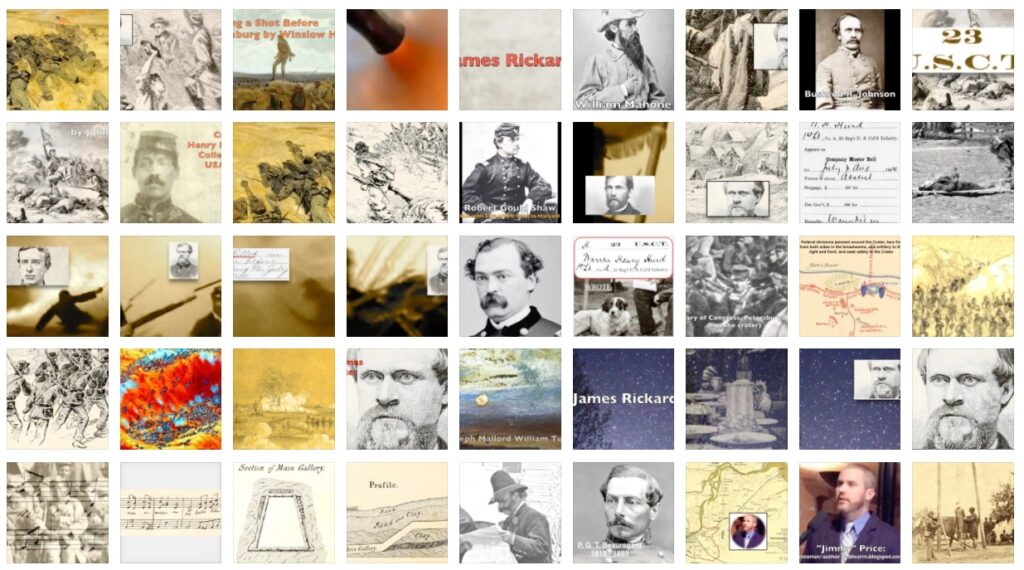

CHAPTER OR STORY 25 (CONCLUSION) https://civilwarscholars.com/uncategorized/chapter-25-conclusion-jasper-thompsons-destiny-day-september-6-1906-by-jim-surkamp/

